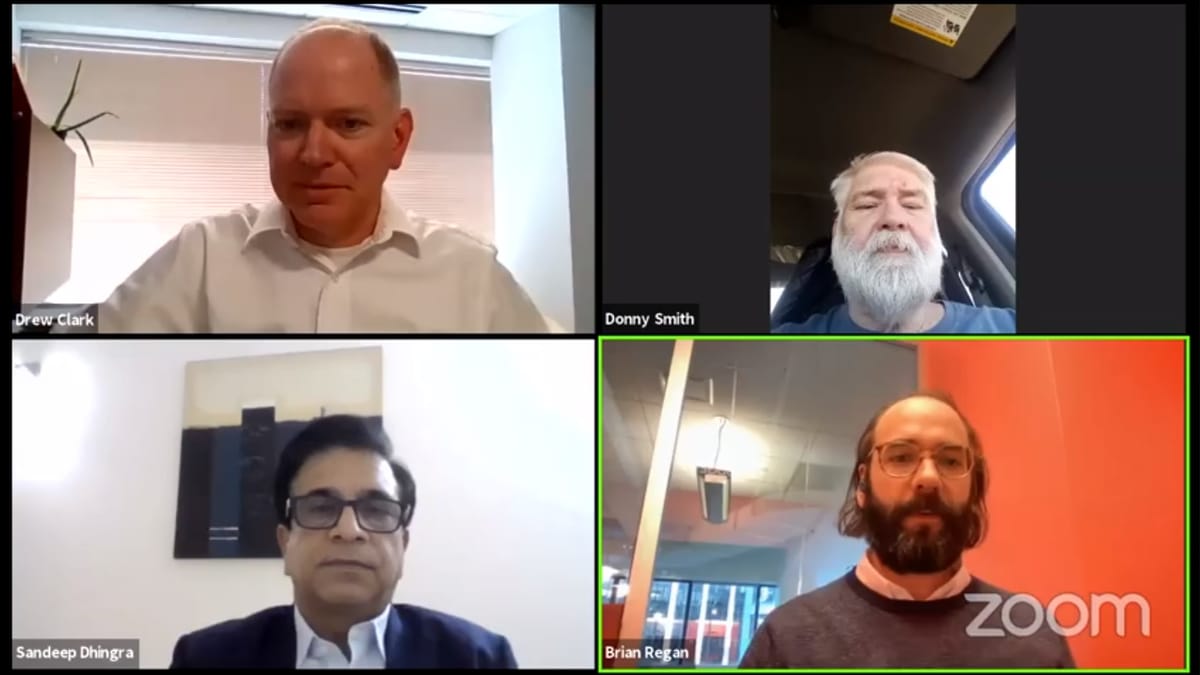Debate About Fiber Versus Wireless for Rural Broadband Deployments Continues to Percolate
March 4, 2021 – Amid claims that the Rural Digital Opportunity Fund chose winners that may not be able to fulfill their broadband commitments, Vantage Point CEO Larry Thompson said his whitepaper contributing to the discussion wasn’t intended to be critical but to figure out what’s best for quick de

March 4, 2021 – Amid claims that the Rural Digital Opportunity Fund chose winners that may not be able to fulfill their broadband commitments, Vantage Point CEO Larry Thompson said his whitepaper contributing to the discussion wasn’t intended to be critical but to figure out what’s best for quick deployment.
During Fiber Broadband Association’s event on Wednesday, Thompson clarified his whitepaper, which this publication covered in a story on Wednesday, wasn’t intended to be criticize what does or doesn’t work, but to examine what is the “right tool for the job.” He noted that part of the consideration is how much bandwidth consumers will need years down the road, not just now.
The paper effectively doubted the claim that fixed-wireless technologies can deliver gigabit speeds in rural areas. The prevailing and predominant thought in the industry is that a direct fiber line is indispensable for the fastest speeds. Fixed-wireless instead uses radio frequency technologies to deliver broadband to the home for the last mile.
“There are significant technical (and related economic) questions that must be confronted in delivering Gigabit broadband using fixed wireless technologies in the predominantly rural areas covered by RDOF,” the paper read.
“Fixed wireless networks will face difficult, if not insurmountable, challenges to provide RDOF Gigabit services in very select circumstances when attempting to service distant, non‐town rural subscribers that were primarily the subject of the RDOF auction,” the paper reads.
Those claims have spilled-over into a full-blown public event, with the Wireless Internet Service Providers Association responding to critics of the FCC’s choice for recipients of the $9.2 billion RDOF fund, which was determined based on a lowest-bidder reverse auction model.
Thompson’s clarification came on the same day that Broadband Breakfast’s Live Online debate considered RDOF and the opportunities and challenges with both fiber and fixed-wireless technologies.
The criticism of the wireless beneficiaries of RDOF was met with resistance.
Brian Regan, vice president of legal, policy and strategy at Starry Inc., an RDOF winner, said there will always be criticism of the process after the fact.
He also expressed faith in the FCC’s ability to manage the front end of the auction and reward the money to the right bidders.
FiberSmith’s CEO Donny Smith agreed with Regan, saying that the RDOF auction was controversial because there was so much money involved. At the end of the day, RDOF will bring more broadband to more Americans, which is a good thing, he said.
Regan said Starry is focused on expanding broadband to as many people as possible, and sees the new funding as an “effective solution to bring service to places where it doesn’t exist.”
Fixed-wireless can achieve gigabit connections with the latest tests from 5G providers, he said.
Winning an FCC auction is just the first step, and the panelists discussed the design and development of expanding broadband into rural areas.
Wireless broadband is not a permanent solution, Smith said, but can be much more cost effective.
But mapping data needs to be accurate, Smith and Regan said. Before networks can be built, Regan said there needs to be accurate broadband mapping data so we know where they’re needed and what can be built.
Good geographic information system data vital to planning and executing networks
Having good geographic information system data is vital to building a broadband network, agreed Sandeep Dhingra, chief technology officer of network services at Sterlite Technologies Limited, which has years of experience building broadband infrastructure outside the United States.
Dhingra also highlighted the importance of digitizing and automating the GIS to keep accurate data. Companies need to do it right the first time so that they are not redoing things over and over, he said.
He also said that every network is ultimately a hybrid of both wired and wireless infrastructure, because fiber or cable must be laid to reach the towers that send out wireless signals.
Smith raised a potential issue with materials and labor, which are in limited supply, especially right now with COVID-19. If companies haven’t planned ahead for these logistics, they’re going to have problems down the road, he said.
The FCC stipulated that RDOF winners are required to have service up and running for at least 40 percent of their winning coverage area within three years, and 20 percent additional coverage each subsequent year, reaching full service within six years.

Some inefficiencies can be mitigated with effective design and planning, Dhingra said. He mentioned using drones for surveying and utilizing local manpower as two examples.
Another challenge can be dealing with state and local municipalities, Smith said. While some local authorities will bend over backwards to help you out because they see the value of getting better broadband to their residents, other authorities will do everything in their power to make your work more difficult, he said.
As tensions rise between local governments and telecom companies about attached to poles, companies need to build relationships with local municipalities as much as possible so that they both understand their shared goals, Dhingra added.










Member discussion